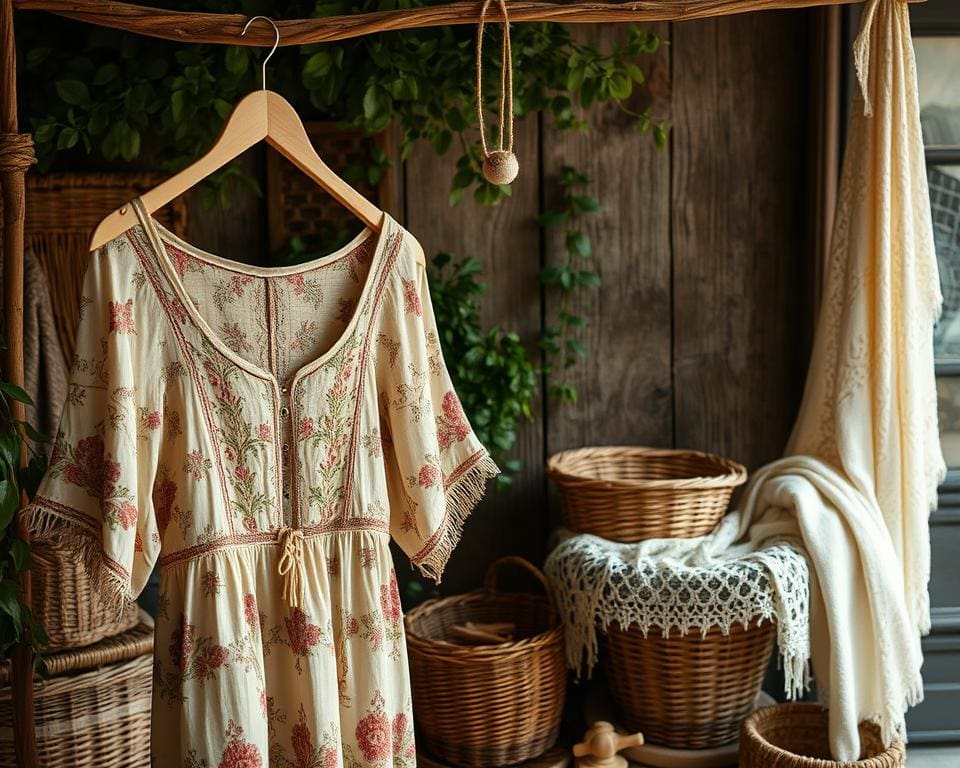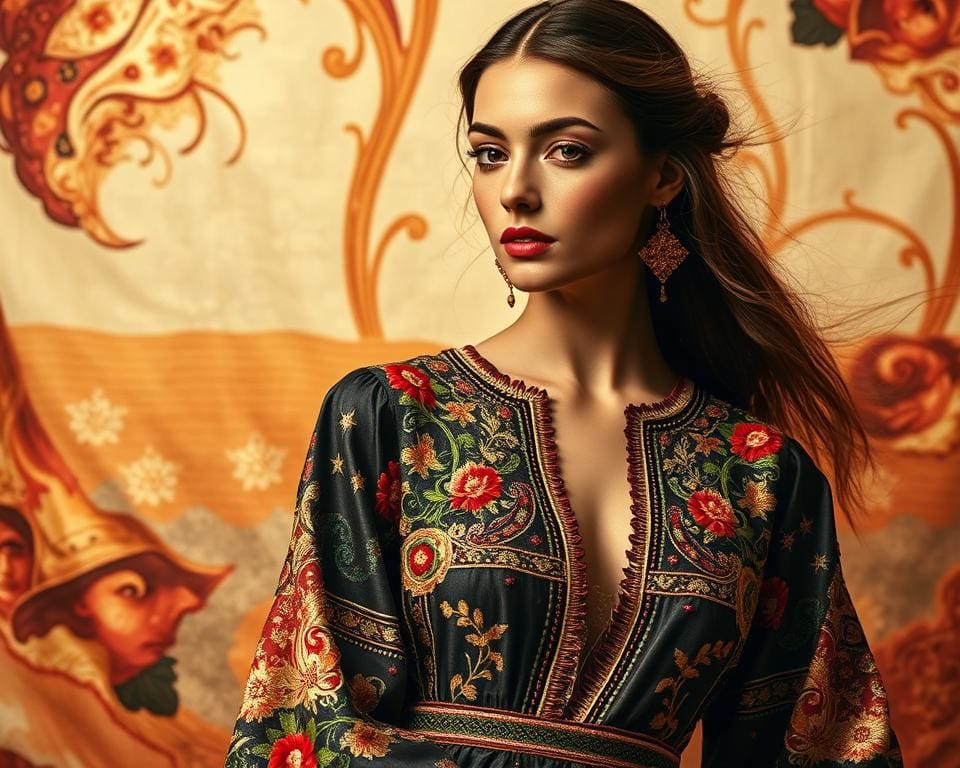The essence of folklore in fashion intertwines traditional narratives with contemporary design, creating a unique tapestry that reflects cultural heritage. So, what does folklore mean in fashion? At its core, the folklore fashion definition encapsulates the stories, motifs, and crafts that have been passed down through generations, influencing modern trends in striking ways. By examining the beauty of folklore in fashion, we can appreciate how these rich traditions serve as a bridge between the past and the future, offering a profound source of inspiration for today’s designers.
Understanding Folklore Fashion Definition
Folklore fashion definition encompasses a rich tapestry of designs that draw inspiration from traditional cultures around the globe. This distinctive fashion genre celebrates the artistry and narratives passed down through generations. It serves as a vibrant expression of identity, where each garment tells a story rooted in local customs and beliefs.
The Key Elements of Folklore Fashion
The key elements of folklore fashion often include specific characteristics that reflect the heritage they represent. These components can be broken down into several defining features:
- Colour palettes inspired by nature and regional landscapes.
- Patterns that evoke the cultural motifs of various communities.
- Use of embroidery and beadwork to showcase intricate craftsmanship.
- Incorporation of handmade techniques, which lend authenticity to each piece.
Exploring Cultural Significance
The cultural significance of folklore within fashion is profound. Garments crafted with tradition in mind articulate the stories, beliefs, and customs of different peoples. By incorporating these elements into modern attire, designers honour and preserve cultural heritage while promoting a sense of belonging. This dialogue between past and present not only enriches personal style but also reinforces individual identity in an increasingly globalised world.

What Does Folklore Mean In Fashion
Folklore serves as a profound wellspring of inspiration within the fashion industry. Designers consistently look to the wealth of narratives embedded in folklore to craft collections that not only showcase aesthetic appeal but also resonate on an emotional level with consumers. The unique blend of historical motifs and contemporary design yields a rich tapestry that celebrates cultural identity while adapting to modern trends.
Folklore as a Source of Inspiration
In the realm of fashion, folklore fashion interpretation allows for a reinterpretation of longstanding traditions. Colourful patterns, intricate embroidery, and storytelling elements derived from various cultures infuse a distinctive flavour into modern folklore in fashion. This artistic approach not only preserves cherished legacies but also inspires innovation.
- Brands like Etro and Desigual exemplify the use of vibrant folklore patterns, incorporating them into everyday wear.
- Local artisans often contribute traditional techniques, creating a bridge between past and present.
- Modern adaptations enable consumers to embrace their cultural roots while expressing individuality.
This fusion extends to consumer identity, as individuals find meaning in the garments they choose. Wearing pieces inspired by folklore can evoke a sense of connection, grounding wearers in their heritage while navigating contemporary life. Through these innovative interpretations, folklore emerges not just as a source of aesthetic inspiration but as a pivotal aspect of personal storytelling in fashion.
A Brief History of Folklore Fashion
The evolution of folklore fashion demonstrates a rich tapestry intertwined with cultural narratives, influencing design aesthetics through the years. Each decade has brought unique interpretations of traditional styles, reflecting societal changes and artistic movements. The influence of folklore across decades has led to vibrant expressions of individuality and heritage in fashion.
Folklore’s Influence Across Decades
Throughout the 20th century, the impact of folklore became increasingly pronounced, with movements such as Bohemian and the Ethnic revival showcasing traditional motifs and craftsmanship. The 1960s saw a rise in folk-inspired attire, driven by the counterculture that valued authenticity and artisanal techniques. These elements resonated through various fashion eras, establishing folklore as a persistent source of inspiration for many designers today.
Notable Designers and Their Contributions
Prominent figures in the fashion world have adeptly woven folklore into their collections, demonstrating its enduring relevance. Vivienne Westwood’s avant-garde approach encompassed elements of British folklore, reviving historical themes with a modern twist. Similarly, Anna Sui incorporated rich cultural references into her whimsical designs, forging a fresh dialogue with heritage. These notable folklore designers exemplify how historical influences can be reimagined, ensuring that folklore fashion history continues to thrive and evolve.
Current Trends in Folklore Fashion
Folklore fashion is experiencing a remarkable resurgence, captivating modern audiences with its rich heritage and narrative depth. Current folklore fashion trends reflect a blend of traditional artistry with contemporary aesthetics, allowing designers to craft pieces that speak both to history and today’s lifestyle. This dynamic interplay brings forth innovative designs that resonate with consumers seeking authenticity and emotional connection in their wardrobes.
Modern Interpretations of Traditional Styles
Recent collections showcase modern interpretations of folklore, transforming classic styles into wearable art. Designers experiment with fabrics, textures, and silhouettes, ensuring that these revitalised garments cater to a broad demographic. Emphasis on sustainability finds a natural fit in this revival, with eco-conscious materials often replacing conventional ones. As a result, items that once belonged to cultural narratives are now accessible as fashion statements that honour their origins.
Folklore Inspired Fashion on Runways
The presence of folklore inspired fashion on runways illustrates its growing importance in the haute couture realm. Prestigious fashion houses frequently integrate regional motifs, patterns, and stories into their collections. The vivid storytelling inherent in folklore allows these brands to connect more deeply with audiences, enriching the overall experience of luxury fashion. This trend highlights not just the beauty of folkloric aesthetics, but also the respect it commands as a vessel of cultural expression.
Folklore Clothing Styles and Symbolism
Folklore clothing styles serve as a vivid tapestry woven from the threads of cultural narratives and histories. Each garment tells a story, with patterns and colours rich in meaning, reflecting the values and beliefs of the communities from which they originate. For instance, the Kvadrat, rooted in Scandinavian traditions, showcases intricate geometric designs, symbolising unity and the interconnectedness of nature. This style not only embodies traditional craftsmanship but also serves as a visual representation of cultural identity.
Similarly, the Huipil from Mexican culture is a striking example of how symbolism in folklore fashion manifests through clothing. Adorned with vibrant colours and elaborate embroidery, the Huipil reflects the wearer’s heritage, with motifs often signifying specific life events or familial lineage. Such traditional clothing in fashion extends beyond mere aesthetics; it encapsulates stories of resilience, celebration, and continuity across generations.
Understanding these folklore clothing styles allows us to appreciate the craftsmanship involved and the deeper cultural narratives they embody. As fashion continues to evolve, these garments remind us of the importance of preserving cultural stories while inspiring contemporary design. By delving into the symbolism in folklore fashion, we not only celebrate diverse heritages but also enrich our own personal style with layers of meaning and history.









